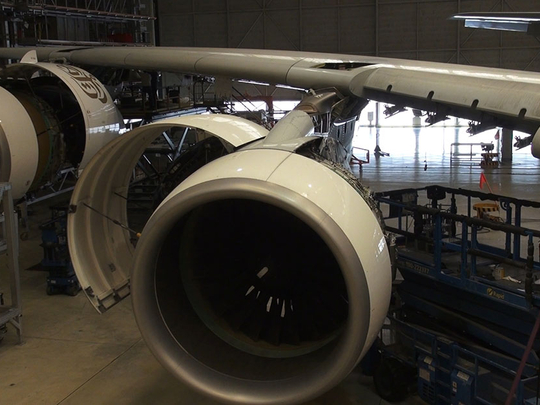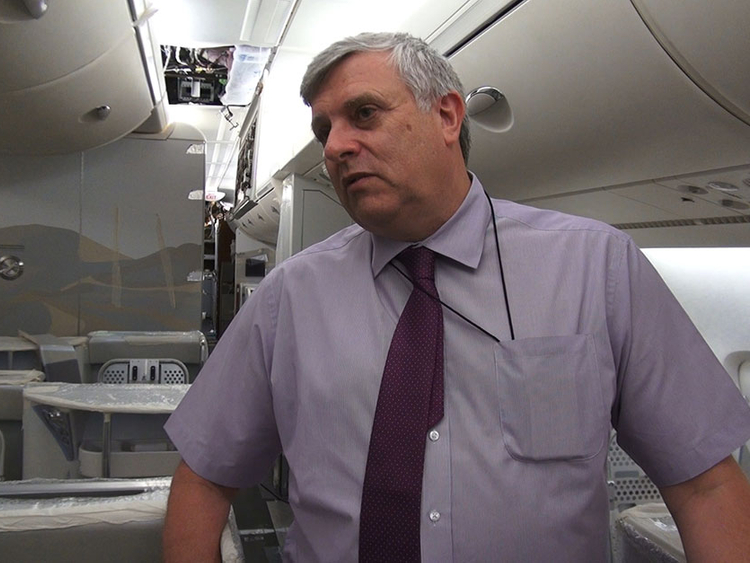
Dubai: Dubai: It can be hard keeping up with the world’s biggest international airline. Just the other week Emirates received four new aircraft in a single day, a record for the airline. Days later, the airline launched two routes on September 1, to Masshad, Iran, its 146th destination, and Orlando, USA, its 147th.
The airline employs thousands of staff around the world including over 4,000 pilots and 20,000 flight attendants to keep its fleet of 238 wide-body aircraft in the sky.
It also employs 5,500 in its engineering building at the northeast corner of its hub, Dubai International. Emirates Engineering, which includes 1,200 engineers along with many others with expertise in painting and software, among other things, is responsible for making sure the aircraft don’t stay on the ground for long.
Just like cars, the aircraft regularly undergo heavy and light maintenance. To cut down on time spent waiting for parts, Emirates stores thousands of spare parts worth millions of dollars on-site at the engineering facility. The world’s biggest international airline simply cannot wait for spare parts to arrive from supply chains in Europe and the United States to Dubai, which is why they need to store “huge volumes,” Keith Carter, Emirates Vice President — Overhaul Workshops, recently told reporters at the engineering facility.
The spare parts, stored in an on-site warehouse, include nearly everything from engine thrusters, structural components, wheels, and even nuts and bolts and have an availability rate of 97 per cent, Carter said. The aviation industry has a loan-for-loan agreement where, if necessary, Emirates can loan a spare part to another airline flying into Dubai International and then pick up a spare part of the same value from the other airline’s hub when it needs it, Carter said.
Saving time
The loan-for-loan relationship among airlines helps carriers avoid prolonged wait periods for spare parts at foreign airports. The would come in handy when Emirates launches the world’s longest passenger flight, 17 hours and 35 minutes, in February to Panama. Airlines do keep their own spare parts at foreign airports too — which Emirates calls outstations, Carter said; however Emirates will also fly out parts if necessary.
On a recent visit by this writer to Emirates Engineering, two Airbus A380s were in the engineering shop for a maintenance check. It can take around 30 days to look over and service an A380 and 50 to 55 days for a major service and complete interior refurbishment, Carter said. A long time to keep any aircraft on the ground but with Emirates operating the world’s largest A380 fleet, 66 to date; it can afford to be flexible.
On the visit, Emirates was in the process of stripping out the interiors of an A380, which Carter said at 6 years old is one of the earlier models the airline ordered. Emirates received its first A380 in 2008 and has so far ordered a total of 140 of the mega passenger jets.
The hangar team has a “huge amount” of work to do on the A380, including structural inspections and modifications all of which need to be documented, Carter said. Working alongside the Emirates hangar team is a group from Airbus doing some of the specific modifications and improvements, he said.
Inside the aircraft, the refurbishment means stripping out the first, business and economy class seats and replacing them with the latest product offering of the self-proclaimed premium airline. There were wires scattered across the cabin, fitters meticulously put each component into place, with the edges of the seats covered in bubble wrap to protect from damage.
The airline tries to repair old parts, Carter said, but they are usually sent back to the original manufacturer or the materials are sold for scrap. The revenue from this sale is used by the Emirates airline foundation, a charitable organisation, and staff get-togethers for the engineering department, Carter said.
Security
Getting around the engineering facility is no mean feat. Staff and visitors first pass through metal detectors and baggage X-rays manned by Dubai police because much of the site is connected to the airport. To get around the multi-level 500,000 cubic metre site, staff and visitors use golf carts and bikes. To drive the golf carts staff need a special airport driver’s licence, Carter said
The airline’s attention to detail is meticulous. There are staff checking and servicing coffee machines used for passengers in first class that want an espresso at 10,000 feet in the air. Sub-contractors, from the Emirates Group-owned Transguard, check the durability of seat belts, staff “flat fire” — or test — the plane’s slides that double up as life rafts. Stretchers and baby incubators used by passengers with medical needs are also closely looked over. Staff also check the life jackets and survival kits that are on-board each aircraft. The survival kit includes a “how to” survival guide, water purifier, flares and food rations, that are halal and vegan.
Paint job
Elsewhere on-site, Emirates repaints all of their aircraft. This happens around every seven years, Carter said. It is an arduous and lengthy job. It takes a team of 30, using 1 tonne of paint and working 24 hours a day, more than 10 days to paint a Boeing 777. A team of 35, using 2.5 tonnes of paint, are needed over 20 days, 24 hours a day to paint an Airbus A380. The painting process is prudent. Each aircraft in Emirates’ fleet of 238 need to be painted in such a way that the logo on the side and the UAE flag on the tail all line up when the aircraft parked at the airport.
It is also in the painting hangar where Emirates puts on decals for sponsorship tie-ups on its aircraft, including the England 2015 logo for the Rugby World Cup that starts this month and the Expo 2020 logo. It’s also where Emirates puts together the special livery for English football team Arsenal. The airline branded a Boeing 777 that was chartered for Arsenal’s visit to Singapore in July with images of Arsenal players and the teams crest. That took the airline seven days, round the clock to put together 90 individual stickers, Carter said.












